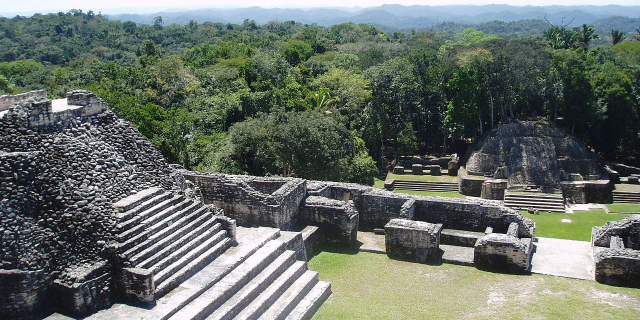Río Plátano Biosphere Reserve
The Río Plátano Biosphere Reserve is a protected area in the La Mosquitia region on the Caribbean coast of Honduras. With a total area of 5,250 square kilometers (2,030 sq mi), most of the reserve runs along the Río Plátano. The reserve has a number of endangered species and some of the largest remnants of tropical forest in Central America. It has been a World Heritage Site and biosphere reserve since 1982. In 2011, UNESCO placed the reserve on the List of World Heritage in Danger.
The reserve encompasses both mountainous and lowland tropical rainforest, full of diverse wildlife and plant life, and has more than 2000 inhabitants. The reserve is part of the Mesoamerican Biological Corridor that stretches from Mexico southward through Central America.
Although the reserve covers a large portion of Honduras, very little is recorded about the biological diversity within it. While previous management plans have proven successful, a cont...Read more
The Río Plátano Biosphere Reserve is a protected area in the La Mosquitia region on the Caribbean coast of Honduras. With a total area of 5,250 square kilometers (2,030 sq mi), most of the reserve runs along the Río Plátano. The reserve has a number of endangered species and some of the largest remnants of tropical forest in Central America. It has been a World Heritage Site and biosphere reserve since 1982. In 2011, UNESCO placed the reserve on the List of World Heritage in Danger.
The reserve encompasses both mountainous and lowland tropical rainforest, full of diverse wildlife and plant life, and has more than 2000 inhabitants. The reserve is part of the Mesoamerican Biological Corridor that stretches from Mexico southward through Central America.
Although the reserve covers a large portion of Honduras, very little is recorded about the biological diversity within it. While previous management plans have proven successful, a continued investigation into ongoing management plans and future conservation issues will be necessary to keep this valuable reserve safe. Currently, there are threats to the conservation of the reserve which include illegal hunting, logging, and clearing of land to graze cattle. Recent rafting expeditions from the Rio Plátano headwaters through all three zones of the reserve (cultural, buffer, and core) have documented cattle grazing in the core zone, commercial fishing and hunting camps along the river, and clear cutting of forest near Las Marias.
In 1960, the land was set aside as the "Ciudad Blanca Archaeological Reserve," named after the rumored ancient settlement known as la Ciudad Blanca. The reserve was renamed "Río Plátano Biosphere Reserve" in 1980 and added to the World Heritage list in 1982.[1]
A management and development was designed in 1980 and implemented in 1987 by the Department of Natural Renewable Resources. In 1997, an additional 3250 km2 was designated as a buffer zone for the reserve. In 1997, the German Development Bank began a plan that would significantly expand the reserve to the Patuca River and the Bosawas Biosphere Reserve in Nicaragua. Currently, the German plan has been delayed.[2]
Archeological sitesThe reserve still has over 200 archeological sites,[3] including the point where Christopher Columbus first arrived in mainland America.[2] The reserve also contains ruined settlements, including stone from buildings and roads, rock carvings, and other remains.[4]
Few of these sites are well-protected; in fact, many of them have been looted and the others are at risk from increased tourism. Although the archeological value of the region initially played a large part in the formation of the reservation, the reservation currently focuses mostly on the protection of the forests.[5]
According to tradition, the legendary settlement fo La Ciudad Blanca is located in the region. Over the years, many professional and amateur archeologists have claimed to find it, but none have produced credible evidence and most professionals remain skeptical that it ever existed.[6]




























Add new comment